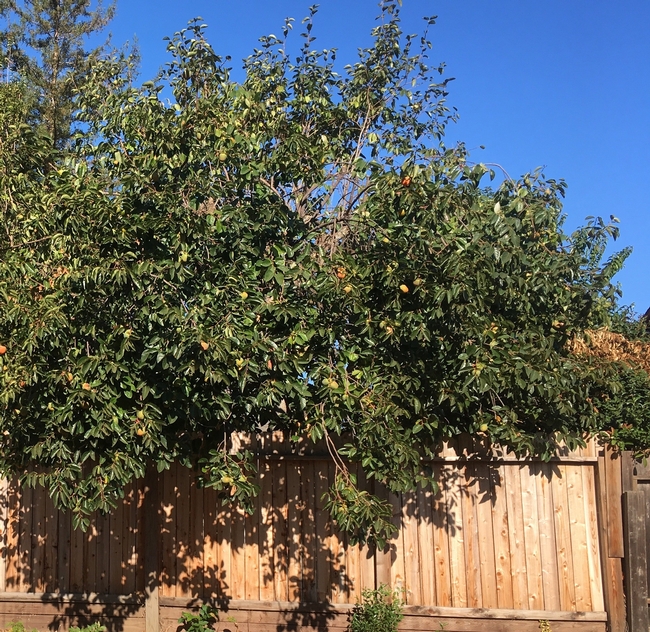Persimmons
What color do you think of when you hear the word October? It's a strange question, but I would guess what popped into your head is the word orange. Orange leaves, orange pumpkins, orange sweet potatoes, orange carrots, and orange persimmons.
Almost every late October a neighbor of my parents invites me to pick whatever I want from his large Hachiya persimmon tree. He likes to see the acorn-shaped fruit get eaten and not land on the ground where he has to pick it up and dump it in the green can. Years ago, his wife (now deceased), would pick the persimmons and sometimes bake cookies with them. Lucky neighbors would receive some of her labor. I usually pick about a dozen. I give some to my dad who likes to eat them just as they are. Although they are orange and look ripe, they are bitter and astringent when they are hard, so he sets them on the counter to get really soft and sweeten up. The way to tell they are ready to eat is to tug slightly on the stem/top and if it comes off easily, the fruit is ready. He then puts them in the fridge for a few hours to get really cold, peels them partially and scoops out the fruit with a spoon and eats it. They really are good this way. I also put them on the counter to ripen but my goal is to bake them into cookies. However, the softening process sometimes takes too long for the time when I want to make the cookies. My solution is to freeze the orange fruit in a plastic bag overnight, thaw it on the counter or in the fridge the next morning and voila – nearly instant, ripe and ready Hachiya persimmons. This method changes the texture and a little of the flavor, but for baking cookies, it's fine. At least, no one has complained yet.
The Otow Ranch in Granite Bay sells preserved Hachiya persimmons that have undergone the hoshigaki method. The English translation from Japanese “hoshi” means dried and “gaki” is from the word “kaki” or persimmon. Each persimmon has the skin removed and is strung by its stem and hung on a rack to dry with another persimmon hung on the opposite end of the string. The temperature has to be 50 degrees Fahrenheit or less so that the fruit doesn't mold. Every 3 to 5 days for weeks, the descendants of the original ranch owners gently massage each fruit and turn it. The fruit slowly dries and the sugar in the fruit comes to the surface, and the fruit flavor concentrates. The outside of the fruit turns white from its own sugar looking a bit like white mold. It's not moldy; it is purely the sugar from the fruit itself rising to its surface. The astringency of the fresh-picked, harder fruit is gone. The tannins that are in the fresh-picked fruit are water-soluble, so with drying they disappear. What's left is chewy, sugar-coated and delicious. Many Asian families buy hoshigaki for holiday gifts. If you are lucky enough to get them as a gift, eat them fairly quickly. If frozen individually they will last about two months. As they thaw in the fridge for 2 – 3 days, the sugar comes back to the surface again. They will last in the fridge about a month, but their scent will affect other foods in the fridge. I have seen them sold vacuum-packed elsewhere, but they still need to be frozen or refrigerated shortly after packing.
Fresh, dried or baked into a dessert, Hachiya persimmons are delicious. Just don't eat them while they are hard, or your mouth will dry and your lips will pucker!

persimmon michelle 20191


Posted by Donna Seslar on October 20, 2019 at 7:44 PM